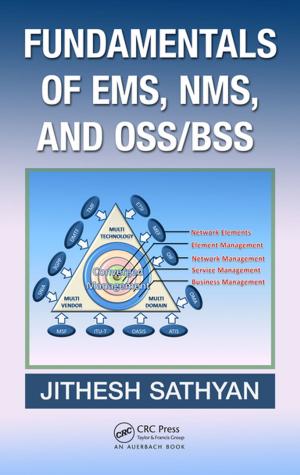Water Pollution and Fish Physiology
Nonfiction, Science & Nature, Technology, Engineering, Environmental, Science, Biological Sciences, Marine Biology, Environmental Science| Author: | Alan G. Heath | ISBN: | 9781351404983 |
| Publisher: | CRC Press | Publication: | February 6, 2018 |
| Imprint: | CRC Press | Language: | English |
| Author: | Alan G. Heath |
| ISBN: | 9781351404983 |
| Publisher: | CRC Press |
| Publication: | February 6, 2018 |
| Imprint: | CRC Press |
| Language: | English |
This book provides a concise synthesis of how toxic chemical pollutants affect physiological processes in teleost fish. This Second Edition of the well-received Water Pollution and Fish Physiology has been completely updated, and chapters have been added on immunology and acid toxicity. The emphasis, as in the first edition, is on understanding mechanisms of sublethal effects on fish and their responses to these environmental stressors.
The first chapter covers the basic principles involved in understanding how fish respond, in general, to environmental alterations. Each subsequent chapter is devoted to a particular organ system or physiological function and begins with a short overview of normal physiology of that system/function. This is followed by a review of how various toxic chemicals may alter normal conditions in fish. Chapters covering environmental hypoxia, behavior, cellular enzymes, and acid toxicity are also included. The book closes with a discussion on the practical application of physiological and biochemical measurements of fish in water pollution control in research and regulatory settings.
This book provides a concise synthesis of how toxic chemical pollutants affect physiological processes in teleost fish. This Second Edition of the well-received Water Pollution and Fish Physiology has been completely updated, and chapters have been added on immunology and acid toxicity. The emphasis, as in the first edition, is on understanding mechanisms of sublethal effects on fish and their responses to these environmental stressors.
The first chapter covers the basic principles involved in understanding how fish respond, in general, to environmental alterations. Each subsequent chapter is devoted to a particular organ system or physiological function and begins with a short overview of normal physiology of that system/function. This is followed by a review of how various toxic chemicals may alter normal conditions in fish. Chapters covering environmental hypoxia, behavior, cellular enzymes, and acid toxicity are also included. The book closes with a discussion on the practical application of physiological and biochemical measurements of fish in water pollution control in research and regulatory settings.















